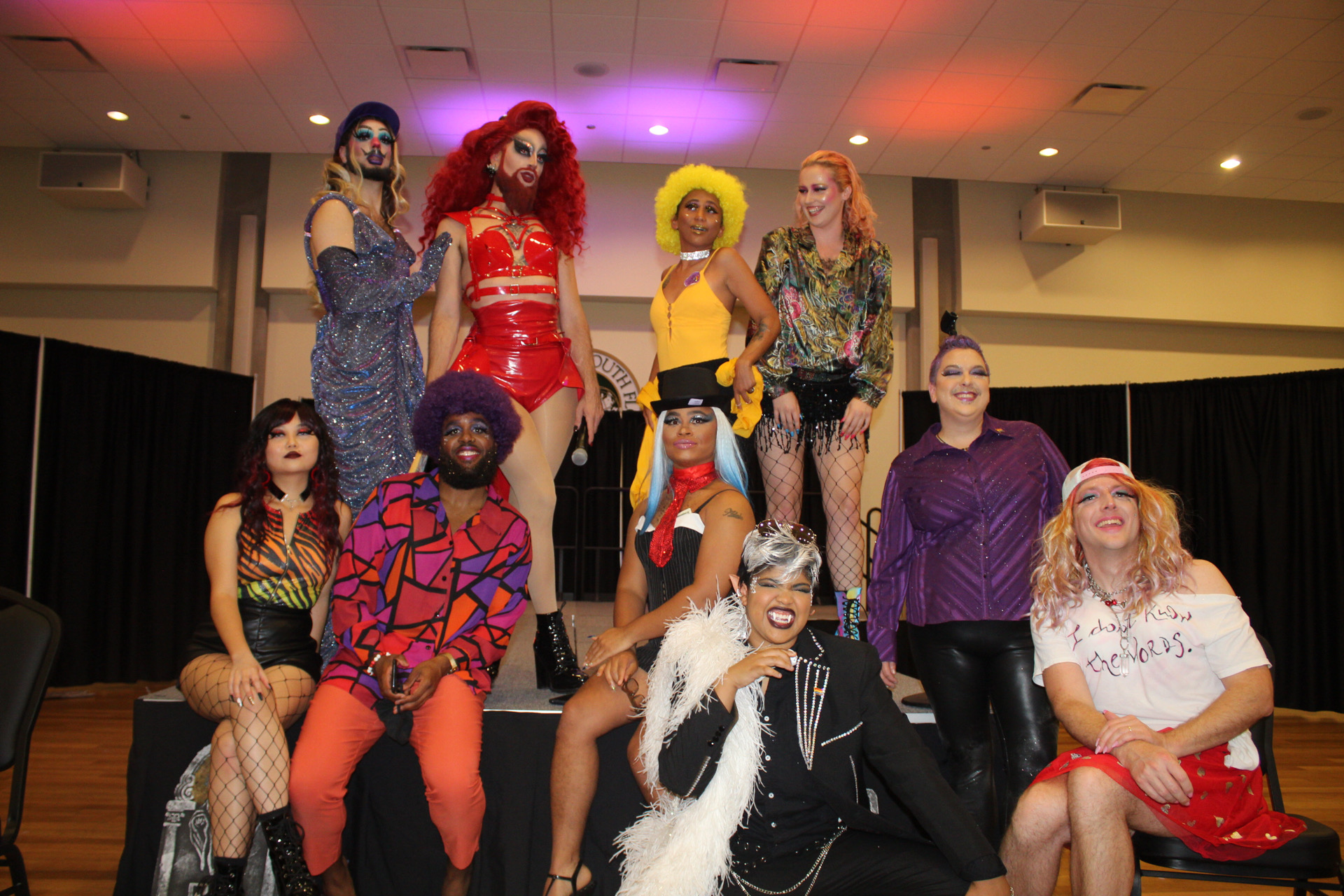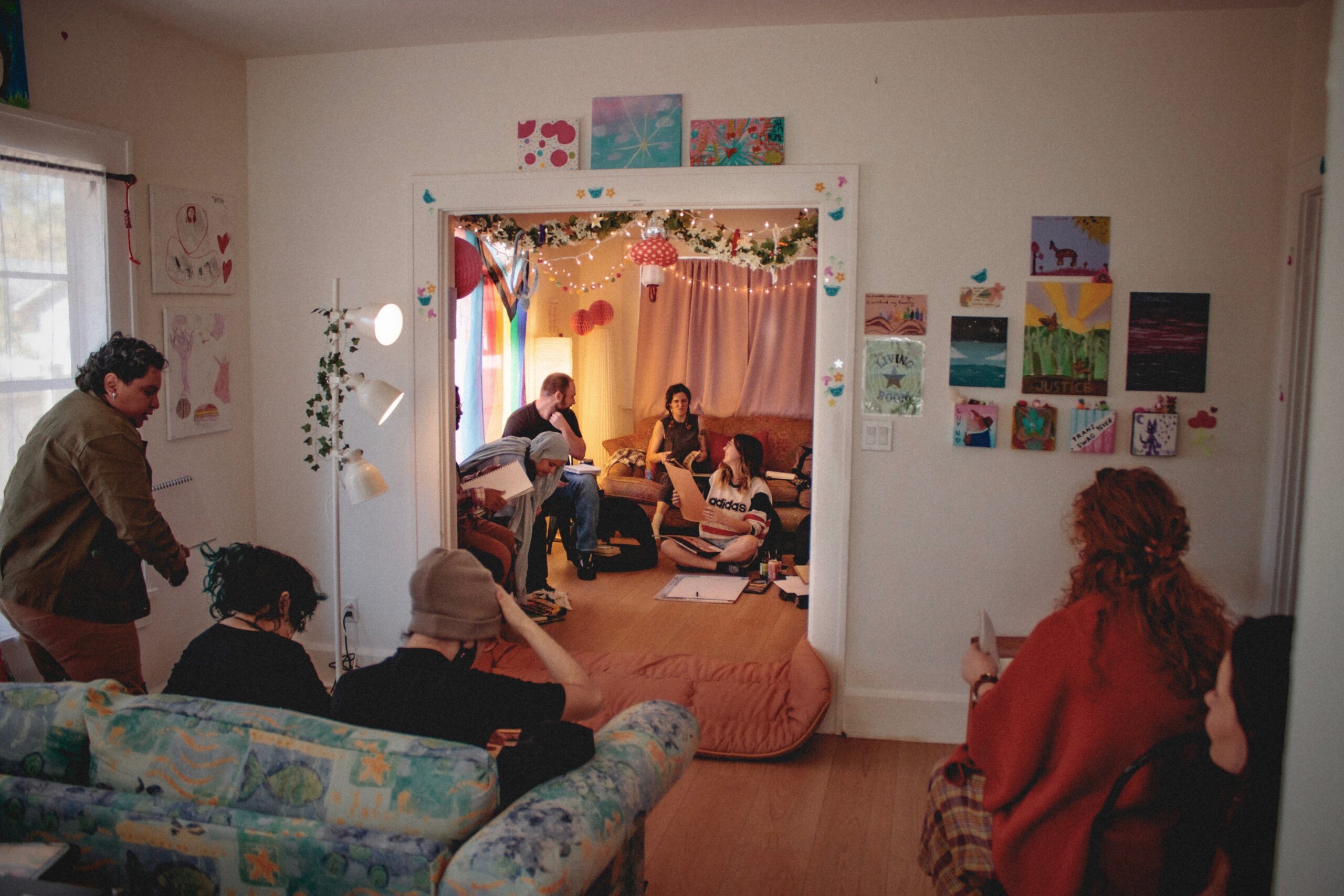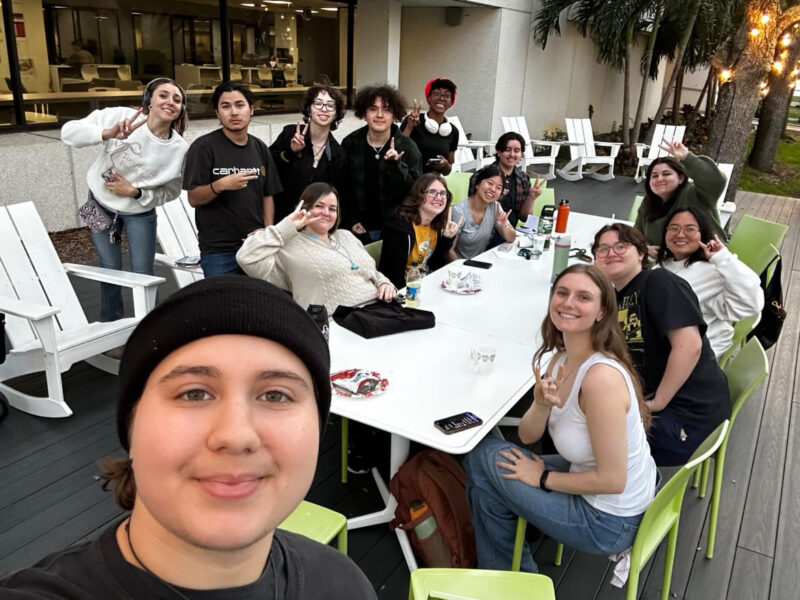Pictured above: (Top, left to right) Aquarius, Adriana Sparkle, Destiny Gomez, Alyssa Pleffner, (bottom, left to right) Jasmine Tran, DeWayne Isaacs, Cadin Small, Jada Barnwell, Christine Grossman and Robert Herron pose after performing in the OMA drag show.
Courtesy of Mika William
By Molly Ryan
After a year of solemnly watching “RuPaul’s Drag Race,” the Office of Multicultural Affairs (OMA) was finally able to fill the platform-heel-shaped hole in students’ hearts.
On Oct. 28, the beloved USF St. Petersburg Drag Show made its post-pandemic comeback in the USC ballroom.
“It was important to revive this event because, for one, it shows support for our LGBTQIA+ students,” said DeWayne Anderson, assistant director of the OMA. “It also brings awareness to drag culture, a very important culture specifically because of its history. Overall, we thought it would be fun to bring this tradition back.”
Since the beginning of the fall semester, the event has been advertised by the OMA with flyers posted throughout campus.
Garnering up to 135 reservations on BullsConnect, the show’s lineup included a variety of student, faculty and alumni performers as well as two-time Best of the Bay award winner for Best Drag Performer Adriana Sparkle and fellow drag queen Aquarius.
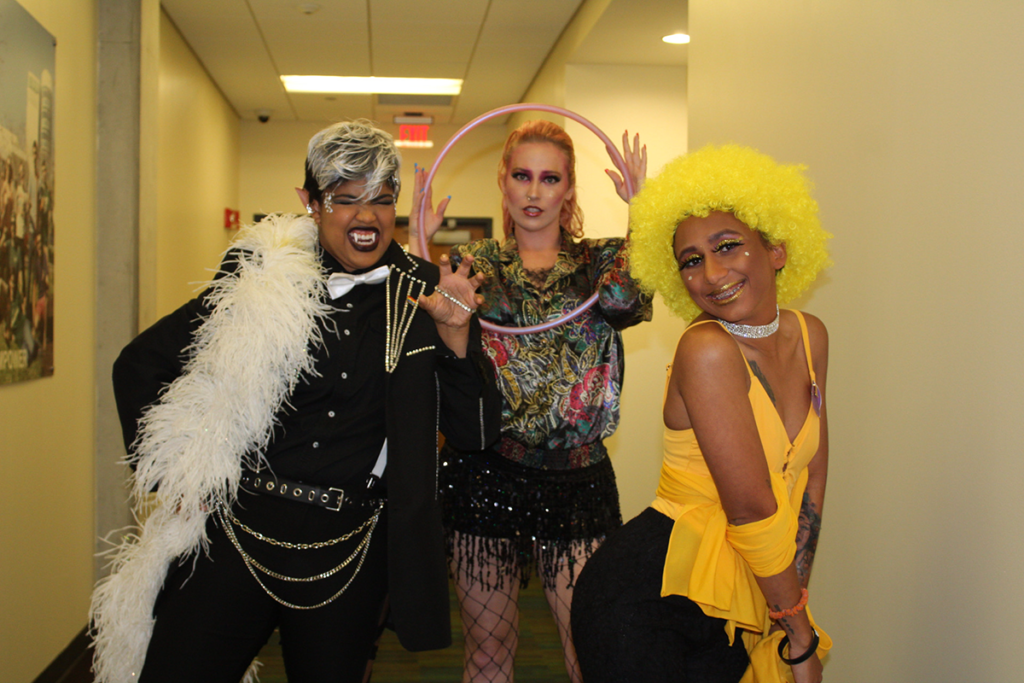
Performances spanned from Adriana Sparkle strutting to “Maneater” by Nelly Furtado, St. Petersburg Assistant Director of Student Engagement Bob Herron dancing in drag to “Call Me Maybe” by Carly Rae Jepsen, performances from the House of Ninja, a Waluigi-costume-clad Aquarius, a glittery beard and purple wig worn by Anderson and many more.
Senior global business major and Executive Director of the OMA Programming Board Alyssa Pleffner performed with a hula-hoop to Remi Wolf’s “Liz” under their drag alias, Twirlette.
“I’m very new to the drag community,” Pleffner said. “I think giving queer folk the ability to play with gender and gender expression in an open and free form, from my understanding, was really the birth of drag – queer men who wanted to dress femme.”
While men have been dressing and performing in traditionally feminine clothing for centuries, drag trailblazed its modern legacy in 1970s New York City ballroom culture.
Carving out a safe space for openly LGBTQ+ individuals, a hallmark of ballroom culture were the competing houses.
According to a 2018 Refinery 29 article, “Each house had a certain specialty…The houses were governed by house parents, who provided guidance and housing to their ‘children.’”
While houses were grounds for drag queens and other queer individuals to make names for themselves at the balls, they were also considered “chosen families” by those who had been rejected from other sectors of society.
Today, as drag culture grows in popularity, traditions like houses are still honored and principles like diversity persist.
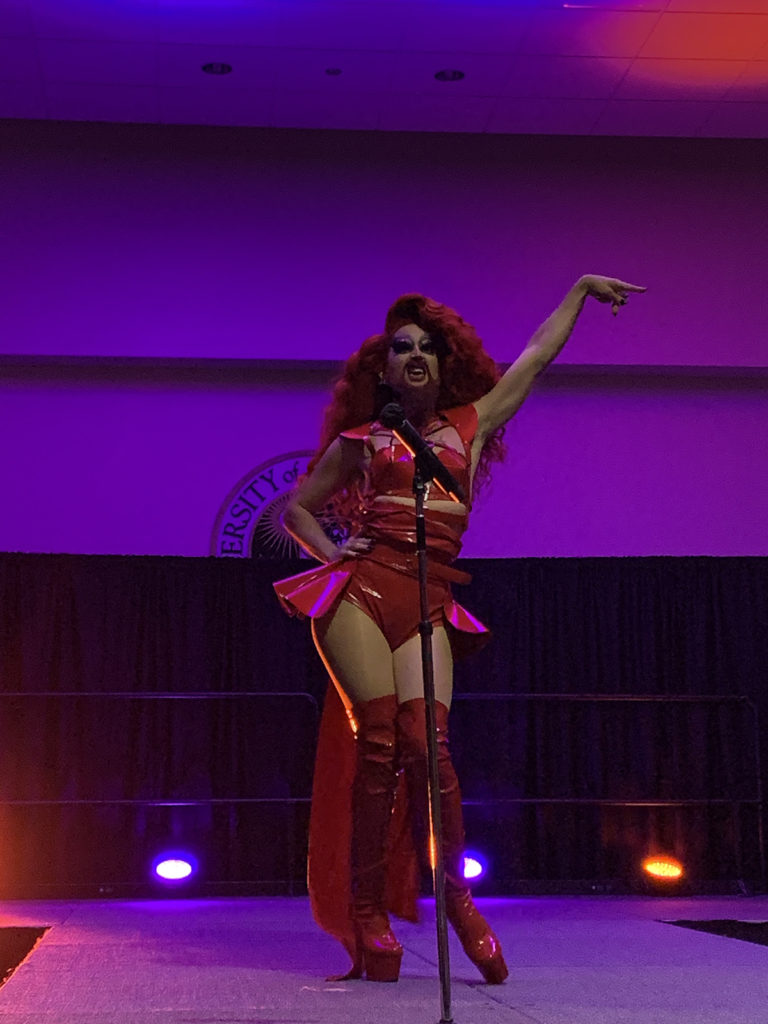
“Now, as society’s progressed, we have nonbinary people like me having the opportunity to have chest hair and booty shorts on at the same time,” Pleffner said. “It’s really all about freedom of expression.”
With queer identity ingrained in St. Petersburg’s history and culture, students like Pleffner believe the campus to be the nexus of USF’s LGBTQ+ community.
“St. Pete is the queerest USF campus,” Pleffner said. “I think having events like this gives the queer students an outlet and a place to feel heard and seen. It also gives students who are not a part of LGBTQ+ community the opportunity to learn about it.”
Sophomore graphic arts major and drag show attendant Skylar Christensen also emphasized the importance of on-campus events that celebrate queer identity.
“The drag show provides a safe space for people to freely express themselves,” Christiensen said. “It also allows people who are interested in the drag scene to come and see what a real drag show is like.”
While simultaneously providing a safe space, the OMA drag show provided live entertainment and comedic relief to students – something missed amid the pandemic.
“I think it’s really important for there to be places where students can authentically be themselves,” said Samantha Gray, graduate assistant of the OMA. “Honestly, this has just been a really awesome and important experience for a lot of students to get out of their comfort zones and celebrate after the pandemic.”

